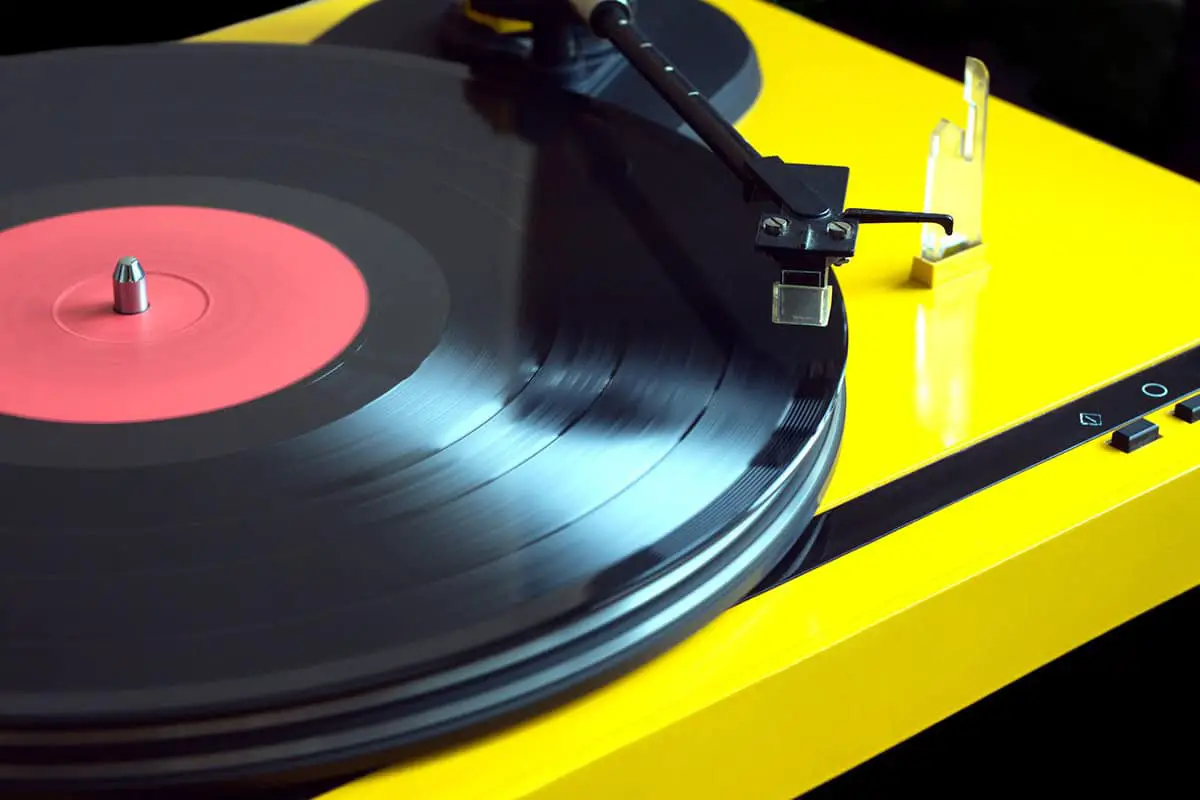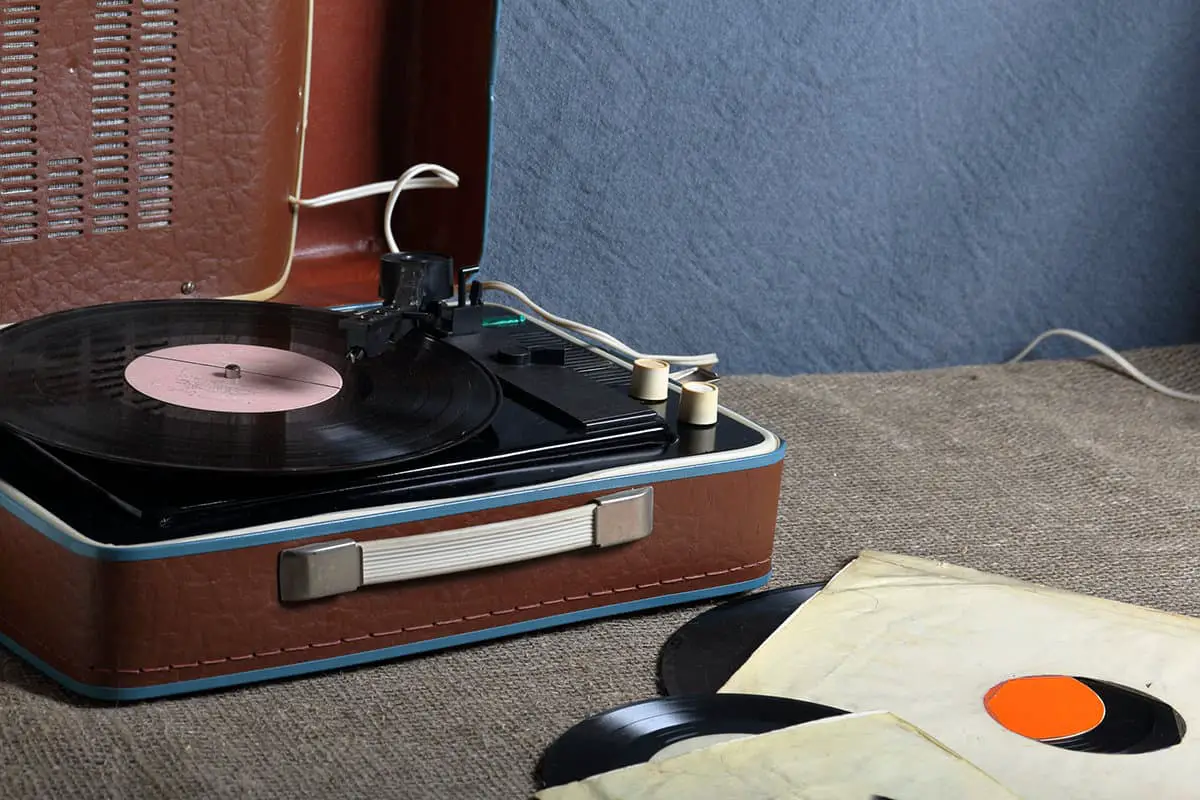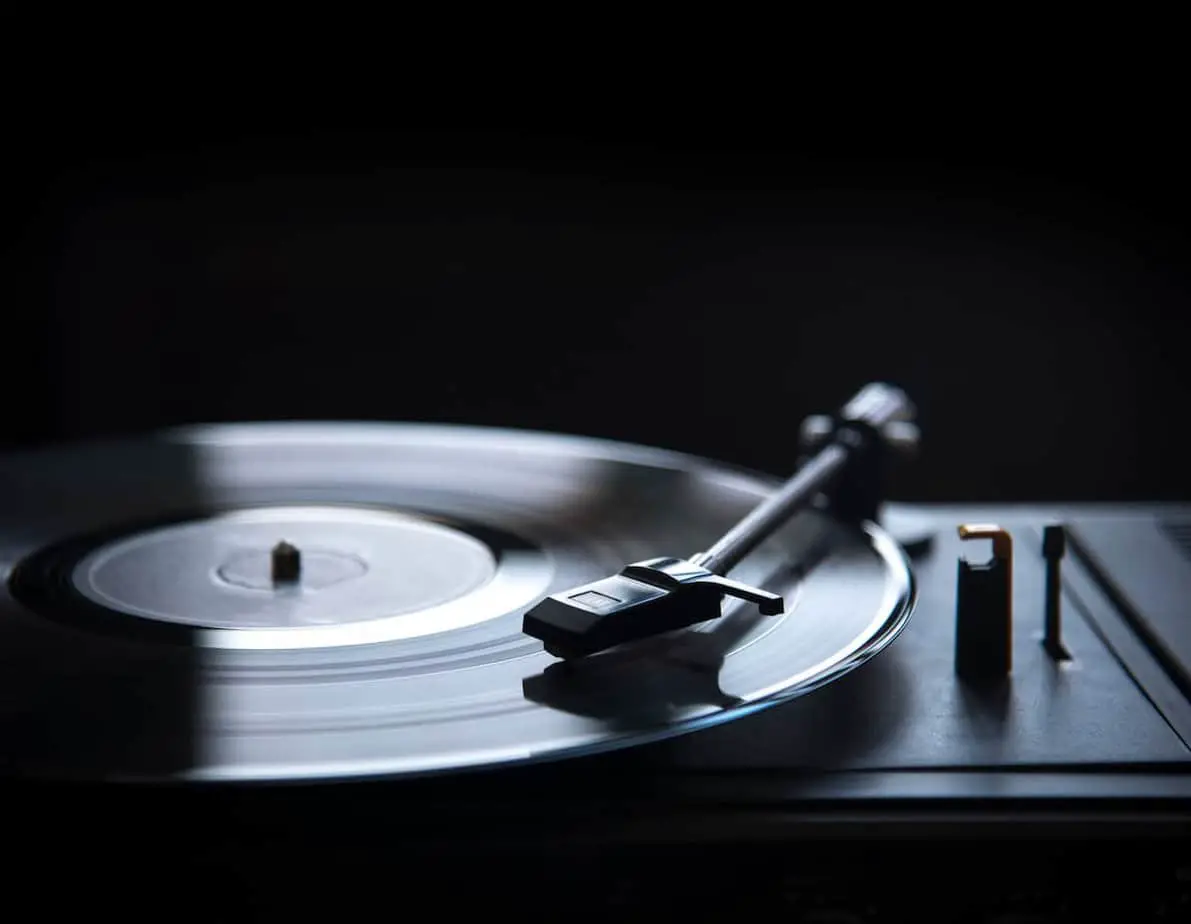This post contains affiliate links.
People love listening to music on vinyl because of its high-quality sound and robust listening experience. A record’s audio data is wholesome and provides arguably the most authentic listening experience. But all that can easily be undone by distortion, so you’ll want to find a solution quickly when your record player gets affected.
A record player may sound distorted due to inner groove distortion, a dirty/worn-out stylus, or inappropriate cartridge weight and height. Potential fixes for this problem include switching to ideal cartridge height and weight, cleaning the records and the stylus, and replacing the stylus.
In the rest of this article, we’ll review the above causes of distortion in a record player in greater detail. We’ll also look at potential fixes for this problem, so be sure to stick around to the end. Let’s dive in!
Table of Contents
Clean Your Records and the Stylus
A seemingly insignificant amount of dust can create distortion even if the record is perfectly fine. Check to make sure the stylus is dust-free and clean it if necessary.
While you’re at it, address the real culprit: the records. Start by brushing off excess dust with a carbon fiber record brush and then wipe off the remaining grime with a soft cloth and record cleaning fluid. Want more details on how to clean your records and your turntable? check out these articles:
- How To Clean a Turntable Needle (Let’s Find Out)
- A Step by Step Guide to Cleaning Vinyl Records With Soap and Water
- A Complete Guide To Properly Cleaning Your Vinyl Records
- A Step By Step Guide To Cleaning Vinyl Records With Microfiber
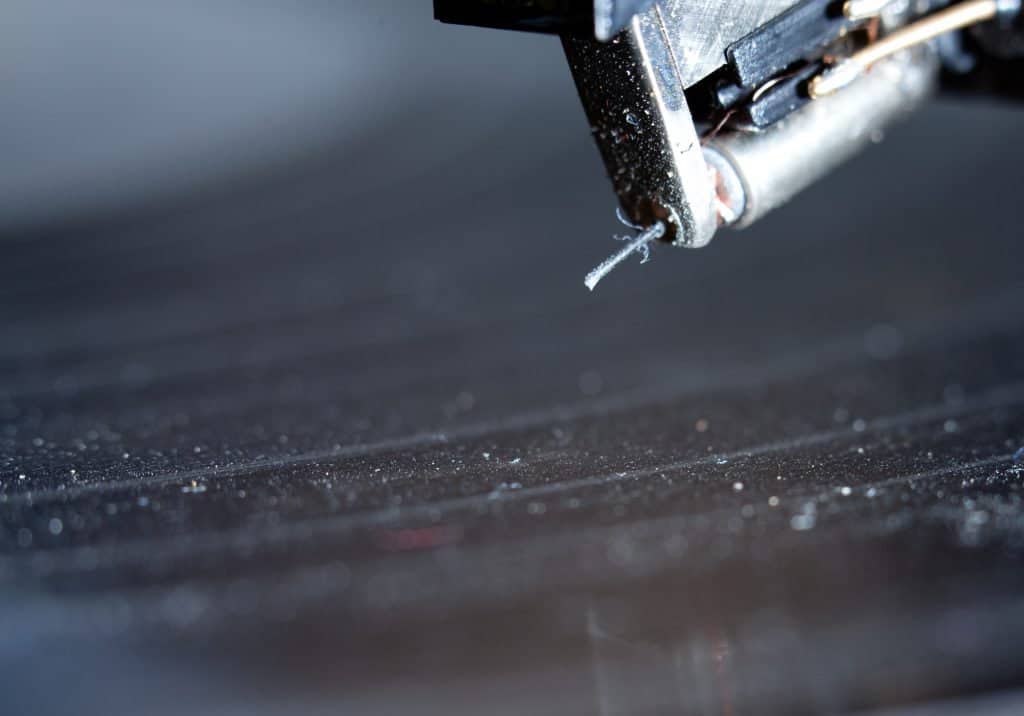
Inner Groove Distortion
A common distortion issue that many vinyl owners face is inner groove distortion. As the name describes, this is when you experience distortion towards the end of the record, on the inner grooves. This issue is an inherent manufacturing flaw for vinyl records. Luckily, it’s becoming less common as manufacturers update their methods.
Inner groove distortion has a lot to do with the way the music is compressed on vinyl records. The circumference of each groove decreases as you get closer to the end of the record. This increasingly smaller space means that the music has to be compressed more compactly later on in the album.
When comparing the first song of the side to the last, the circumference of the grooves decreases significantly. Your stylus also does not have the same amount of time to trace the grooves in the last song as it did in the first song.
Some record manufacturers attempt to avoid this issue by spreading the music out as much as possible. Even if the record is short enough to fit on one record, some manufacturers opt to spread the music out over two records. This method works to avoid those tricky inner grooves as much as possible, giving you the best listening experience.
You can tell if you are suffering from inner groove distortion with a simple test. Where is the distortion occurring? If the first song on the album sounds perfect, but the last song produces distortion, then inner groove distortion is likely the culprit.
For more information on inner groove distortion, you can check out this informative video on YouTube from Fluance Audio:
A Dirty/Worn Out Stylus
The stylus is arguably the most common cause of distortion in record players. This part of a record player is mostly affected by the dirt it picks up as it tracks record grooves. With enough time and regular use, dirt can build up on the stylus tip and compromise its ability to accurately track the groove, ultimately causing distortion.
The stylus can also be compromised by wear and tear. While this is less common due to the typical durability of the stylus, it’s still worth looking into. To do that, use a jeweler’s magnifying glass to check for any flat spots on the stylus. If you notice any, wear and tear is likely the cause of the distortion.
Inappropriate Cartridge Weight/Height
Getting the right cartridge weight is important for the balance of the tonearm. If your cartridge is too light for your record player, the tonearm won’t be able to rest properly on the record. On the other hand, a cartridge that’s too heavy will rest too firmly on the record, potentially damaging its grooves with every minute of playing time. Either way, you’ll experience distortion.
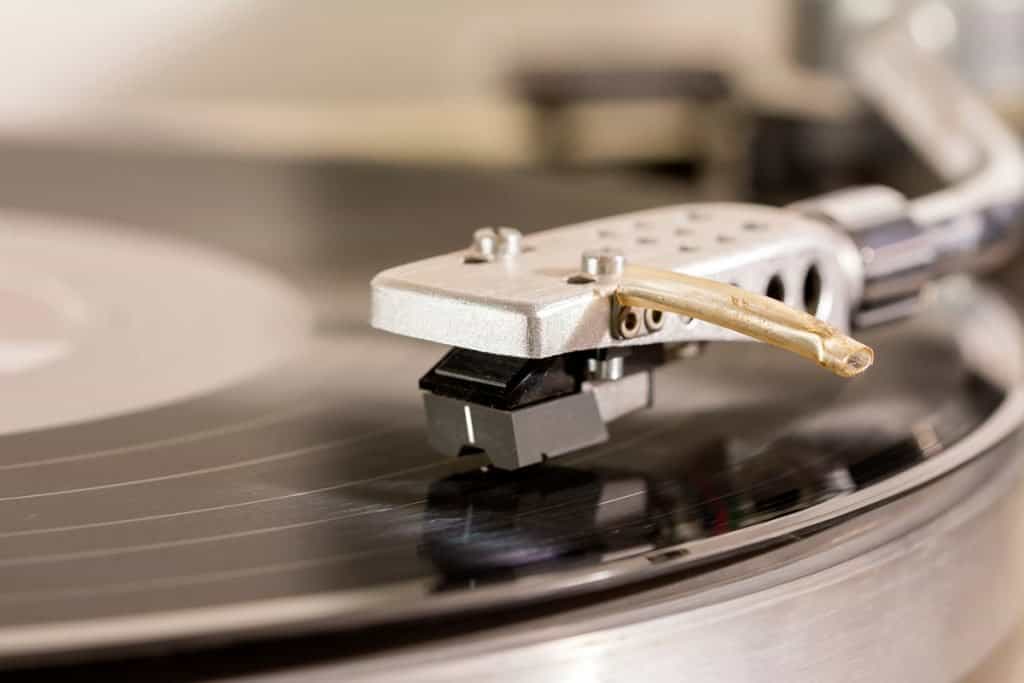
The height of your cartridge impacts the tonearm’s Vertical Tracking Angle, a crucial determinant of the Stylus Raking Angle. The latter angle describes how your stylus makes contact with the record, and impacts the sound it ultimately produces. For the best sound quality, you need to maintain a consistent cartridge height.
How To Fix Distortion on a Record Player
Whether you’re suffering from inner groove distortion or another type of general distortion, there are a series of checks and upgrades you can make to your system to improve the sound quality. Let’s take a look at what you can do for your stylus and cartridge to make sure they’re reading each record perfectly.
Upgrade or Align the Cartridge
Checking your cartridge for overdue upgrades and misalignments is a great first step to battle distortion. Depending on the age and mileage of your current cartridge, you may choose to upgrade altogether and purchase a newer, higher-quality option.
If you choose to purchase a new cartridge, there are a few things to keep in mind as you install it in order to give you the highest-quality listening experience.
First, keep in mind that the height of the cartridge is important for producing the best quality sound. The height of the cartridge will be influenced by your record player’s tonearm. This component may or may not be adjustable, depending on the make and model of your device.
If your record player doesn’t have an adjustable tonearm, you’ll need to recreate the height of the original cartridge. The manufacturer will provide specifications for replacement cartridges so you can find one that’s compatible with your device.
Switch to Ideal Cartridge Weight
Another important factor to check when replacing an old cartridge is the ideal weight for your record player. Different makes and models will have different ideal cartridge weights, measured in grams.
Manufacturers usually specify the ideal weight for each record player, so be sure to check your user manual or product specifications for that. If you find that you’re using the wrong weight, replace your cartridge.
For more information on replacing your cartridge, you can check out this tutorial on YouTube:
Replace the Stylus
If you have an older stylus that has seen a lot of use, it might be time to get a new one. Take a close look at your current stylus. If it’s visibly worn down, you can trust that it isn’t reading your record as well as it could, and that an upgrade is overdue.
It can be advantageous to replace your cartridge and stylus at the same time. If you’ve had your record player for a while or had purchased it used to begin with, consider upgrading both components together. This dual upgrade will give you the best chance at improved sound quality without having to replace your whole record player.
What Happens If Nothing Worked?
If nothing worked and you’re still experiencing distortion after attempting the above fixes, it might be time to replace the record. Records aren’t immune to wear (particularly the grooves), and overplayed ones can cause distortion.
With enough groove wear, the stylus may slide off the grooves when you attempt to play the record. If this happens, this is a clear sign that the record has been played out and needs replacement.
You can also check if a particular record is the culprit by swapping it for a newer one. If the distortion disappears when you play a different record, chances are your record player isn’t the problem; a worn out record is.
Summing Up
If you’re experiencing distortion when listening to your favorite record, it could be due to inner groove distortion, a worn-out record, a dirty/worn out stylus, or inappropriate cartridge weight and height.
Depending on the cause, you can fix the distortion by switching to the recommended cartridge height and weight, cleaning the records and the stylus, or replacing the stylus. If nothing works, check the record for wear and tear and replace it if necessary.
VacationVinyl.com is a participant in the Amazon Services LLC Associates Program, an affiliate advertising program designed to provide a means for sites to earn advertising fees by advertising and linking to Amazon.com. We also participate in other affiliate programs which compensate us for referring traffic.

